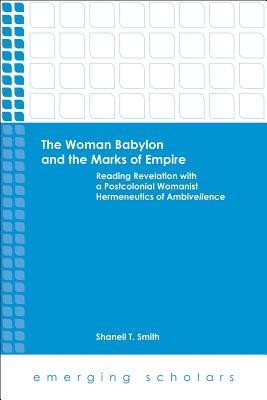
- We will send in 10–14 business days.
- Author: Shanell T Smith
- Publisher: Augsburg Fortress Publishing
- Year: 2014
- Pages: 224
- ISBN-10: 1451470150
- ISBN-13: 9781451470154
- Format: 15.2 x 22.9 x 1.2 cm, softcover
- Language: English
- SAVE -10% with code: EXTRA
Reviews
Description
The Great Whore of the Book of Revelationthe hostile symbolization used to illustrate the authors critique of empirehas attracted considerable attention in Revelation scholarship. Feminist scholar Tina Pippin criticizes the use of gendered metaphors Babylon as a tortured womanwhich she asserts reflect an inescapably androcentric, even misogynistic, perspective. Alternatively, Elisabeth Schssler Fiorenza understands Johns rhetoric and imagery not simply in gendered terms, but in political terms as well, observing that Babylon relies on conventionally coded feminine language for a city.
Shanell T. Smith seeks to dismantle the either/or dichotomy within the Great Whore debate by bringing the categories of race/ethnicity and class to bear on Johns metaphors. Her socio-cultural context impels her to be sensitive to such categories, and, therefore, leads her to hold the two elements, woman and city, in tension, rather than privileging one over the other. Using postcolonial womanist interpretation of the woman Babylon, Smith highlights the simultaneous duality of her characterizationher depiction as both a female brothel slaveandas an empress or imperial city. Most remarkably, however, Smiths reading also sheds light on her own ambivalent characterization as both a victim and participant in empire.
EXTRA 10 % discount with code: EXTRA
The promotion ends in 20d.04:49:27
The discount code is valid when purchasing from 10 €. Discounts do not stack.
- Author: Shanell T Smith
- Publisher: Augsburg Fortress Publishing
- Year: 2014
- Pages: 224
- ISBN-10: 1451470150
- ISBN-13: 9781451470154
- Format: 15.2 x 22.9 x 1.2 cm, softcover
- Language: English English
The Great Whore of the Book of Revelationthe hostile symbolization used to illustrate the authors critique of empirehas attracted considerable attention in Revelation scholarship. Feminist scholar Tina Pippin criticizes the use of gendered metaphors Babylon as a tortured womanwhich she asserts reflect an inescapably androcentric, even misogynistic, perspective. Alternatively, Elisabeth Schssler Fiorenza understands Johns rhetoric and imagery not simply in gendered terms, but in political terms as well, observing that Babylon relies on conventionally coded feminine language for a city.
Shanell T. Smith seeks to dismantle the either/or dichotomy within the Great Whore debate by bringing the categories of race/ethnicity and class to bear on Johns metaphors. Her socio-cultural context impels her to be sensitive to such categories, and, therefore, leads her to hold the two elements, woman and city, in tension, rather than privileging one over the other. Using postcolonial womanist interpretation of the woman Babylon, Smith highlights the simultaneous duality of her characterizationher depiction as both a female brothel slaveandas an empress or imperial city. Most remarkably, however, Smiths reading also sheds light on her own ambivalent characterization as both a victim and participant in empire.


Reviews